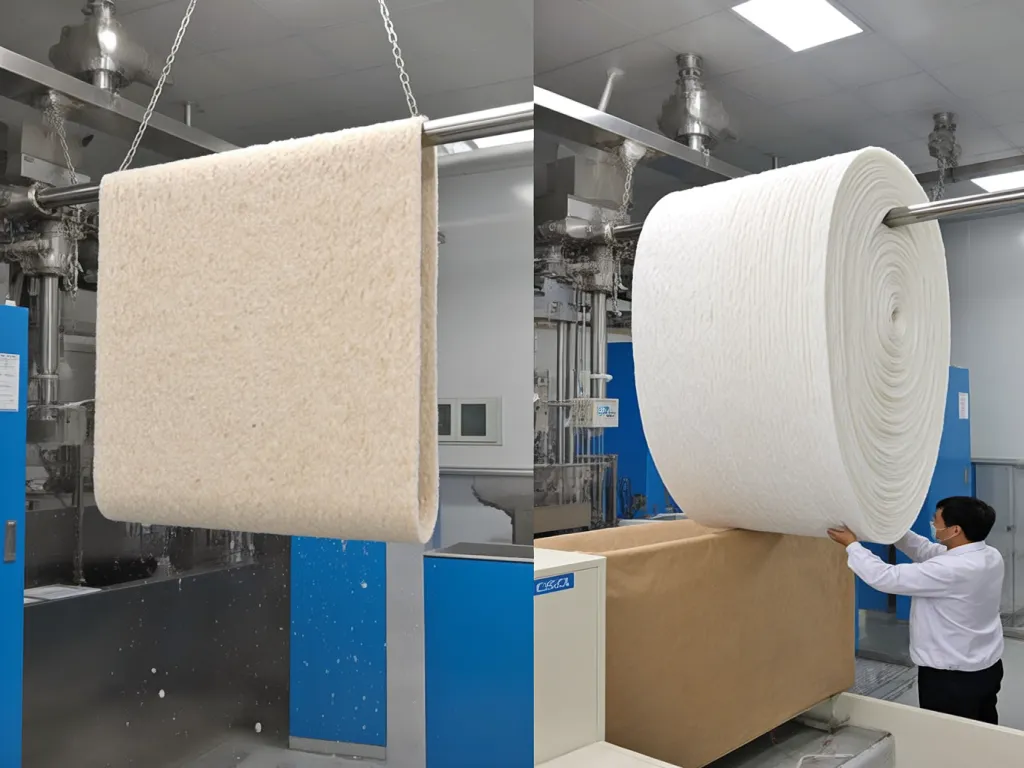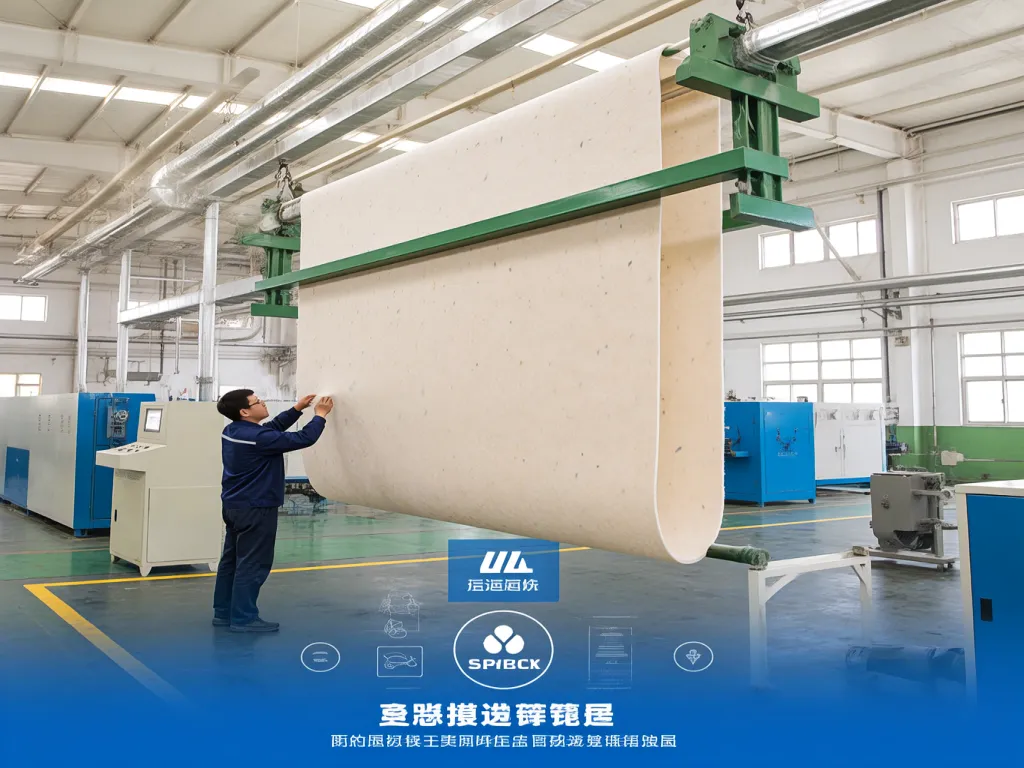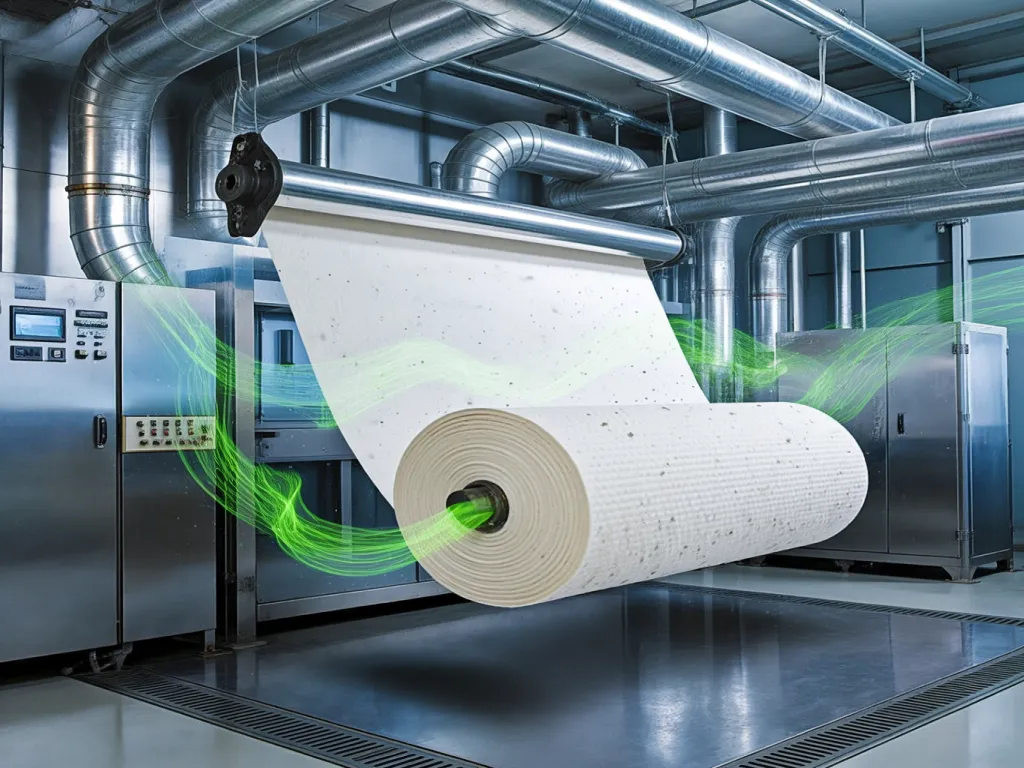Wool vs. Synthetic: Felt Filter Cloth Guide

When it comes to industrial filtration, the choice of felt filter cloth can make or break your system’s efficiency. Whether you’re sifting through wool felt filter cloth industrial applications or weighing synthetic fiber felt filter cloth advantages, understanding the nuances is key. This blog dives deep into the felt filter cloth for industrial filtration debate, comparing natural wool to synthetic fibers head-to-head. Ever wondered which material truly stands out in terms of performance, durability, and cost-effectiveness? Let’s unravel the mysteries together and find your perfect filtration match.

Wool Felt Filter Cloth: Advantages and Limitations of Natural Materials
When it comes to industrial filtration, the choice of filter cloth material can make or break your system’s efficiency. Among the options, wool felt filter cloth stands out as a natural contender, but is it the right fit for your needs? Let’s dive into the world of wool felt and uncover its unique advantages and inherent limitations. Wool felt, derived from the natural fibers of sheep, brings a host of benefits to the industrial filtration table. Firstly, its filtration performance is nothing short of remarkable. The intricate structure of wool fibers creates a dense network of pores that effectively trap particles, ranging from fine dust to larger debris. This makes wool felt filter cloth ideal for applications where high filtration efficiency is paramount, such as in the food and beverage industry or in pharmaceutical manufacturing. But what about its temperature tolerance? Wool felt is known for its excellent heat resistance, capable of withstanding temperatures up to 200°C (392°F) without significant degradation. This makes it a suitable choice for hot gas filtration or in processes where elevated temperatures are common. However, every rose has its thorn, and wool felt is no exception. When it comes to chemical stability, wool felt can be a bit of a wild card. While it generally performs well against organic solvents and some acids, it’s vulnerable to strong alkalis and certain oxidizing agents. This means that in environments where these chemicals are prevalent, wool felt might not be the best option. So, where does wool felt filter cloth truly shine? One of its most notable applications is in the filtration of liquids in the food and beverage sector. Here, its natural origin and ability to filter out impurities without altering the taste or aroma of the product are invaluable. Additionally, in the textile industry, wool felt is used for air filtration, capturing lint and fibers to maintain a clean working environment. But let’s not forget about the limitations. Wool felt’s susceptibility to moisture absorption can be a drawback in humid environments. When wet, its filtration efficiency can decrease, and it may even promote bacterial growth if not properly maintained. This necessitates careful consideration of the operating environment when selecting wool felt as your filter cloth of choice. In summary, wool felt filter cloth offers a unique blend of natural advantages, including excellent filtration performance, heat resistance, and suitability for food-grade applications. However, its chemical sensitivity and moisture absorption tendencies require careful evaluation of the industrial setting. By understanding these pros and cons, you can make an informed decision on whether wool felt is the right material for your industrial filtration needs.
Filtration Performance of Wool Felt
The filtration performance of wool felt is truly impressive. Its dense fiber network allows for efficient particle capture, making it suitable for a wide range of industrial applications. Whether you’re dealing with fine dust in a woodworking shop or larger debris in a metalworking facility, wool felt can handle the job with ease. Its ability to filter out impurities without compromising airflow is a testament to its effectiveness.
Temperature Resistance of Wool Felt
Wool felt’s temperature resistance is another key selling point. With the ability to withstand high temperatures, it’s a reliable choice for hot gas filtration or in processes where heat is a constant factor. For instance, in certain industrial boilers, wool felt can maintain its integrity and filtration efficiency even under extreme conditions, reducing the need for frequent replacements.
Chemical Stability Challenges
While wool felt has many strengths, its chemical stability can be a concern. Exposure to strong alkalis and certain oxidizing agents can lead to degradation, compromising its filtration performance.
Ideal Industrial Scenarios for Wool Felt
So, where does wool felt filter cloth excel? In the food and beverage industry, its natural origin and ability to filter without altering product quality are highly valued. Similarly, in the textile industry, its air filtration capabilities help maintain a clean and safe working environment. These scenarios highlight wool felt’s versatility and suitability for specific industrial needs.

Synthetic Fiber Felt Filter Cloth: Innovations and Breakthroughs in Artificial Synthesis
When it comes to industrial filtration, the choice of filter cloth material can make or break your system’s efficiency and longevity. While wool felt filter cloths have been a traditional choice, synthetic fiber felt filter cloths are rapidly gaining ground. So, what makes synthetic fiber felt such a game-changer in the world of industrial filtration? Let’s dive into the key aspects: filtration efficiency, durability, cost-effectiveness, and environmental friendliness.
Firstly, let’s talk about filtration efficiency. Synthetic fibers, such as polyester, polypropylene, and nylon, are engineered to have precise pore sizes and surface structures. This means they can capture particles more effectively than natural fibers, which may have inconsistent pore distributions. Imagine trying to sieve fine sand through a net with large holes versus one with small, uniform holes. The latter will trap more sand, right? Similarly, synthetic fiber felt filter cloths ensure a higher level of particle retention, leading to cleaner filtered liquids or gases.
Durability is another area where synthetic fibers shine. Unlike wool, which can degrade over time due to moisture, chemicals, or high temperatures, synthetic fibers are designed to withstand harsh industrial environments. They resist abrasion, chemical corrosion, and thermal degradation, ensuring a longer lifespan for your filter cloths. This translates to fewer replacements and lower maintenance costs in the long run. Have you ever had to replace a filter cloth mid-operation because it couldn’t handle the pressure? With synthetic fiber felt, that worry becomes a thing of the past.
Now, let’s talk about cost-effectiveness. While the initial investment in synthetic fiber felt filter cloths might be slightly higher than wool, the total cost of ownership is significantly lower. Why? Because they last longer, require less frequent replacements, and perform more consistently. Plus, synthetic fibers can be produced at scale, driving down manufacturing costs. This makes them an attractive option for industries looking to optimize their filtration processes without breaking the bank. Think about it: would you rather spend more upfront on a durable, high-performing filter cloth or keep replacing cheaper, less effective ones?
Lastly, but certainly not least, is the environmental aspect. Synthetic fiber felt filter cloths can be designed to be more eco-friendly than their wool counterparts. For instance, some synthetic fibers are recyclable, reducing waste in landfills. Additionally, because they last longer, there’s less need for frequent manufacturing, which in turn reduces the carbon footprint associated with production. Moreover, advancements in synthetic fiber technology have led to the development of biodegradable options, further minimizing environmental impact. Are you concerned about the environmental footprint of your industrial operations? Switching to synthetic fiber felt filter cloths could be a step in the right direction.
In summary, synthetic fiber felt filter cloths represent a significant innovation in industrial filtration. Their superior filtration efficiency, durability, cost-effectiveness, and environmental friendliness make them a compelling choice for industries across the board. Whether you’re filtering liquids in a chemical plant or gases in a power station, synthetic fiber felt filter cloths offer a reliable, efficient, and sustainable solution. So, why not give them a try and see the difference for yourself?

Practical Case Analysis: Performance Comparison of Different Felt Filter Cloth Materials in Industrial Applications
When it comes to industrial filtration, the choice of felt filter cloth material can significantly impact both the filtration efficiency and production costs. To help you make an informed decision, let’s dive into some real-world case studies that highlight the performance differences between wool felt and synthetic fiber felt filter cloths.
Imagine you’re running a steel manufacturing plant. The dust and particulate matter generated during the production process need to be effectively filtered out to maintain air quality and equipment longevity. Here, wool felt filter cloths have traditionally been the go-to option due to their excellent filtration capabilities and natural resistance to heat. However, wool felt isn’t without its drawbacks. It tends to be more expensive and can degrade faster in acidic environments, which are not uncommon in steel plants.
Now, let’s switch gears and consider a chemical processing facility. Here, the filtration needs are different. The chemicals involved can be highly corrosive, posing a challenge for wool felt. Enter synthetic fiber felt filter cloths. Made from materials like polyester or polypropylene, these filters offer superior chemical resistance and durability at a lower cost. In one case study, a chemical plant switched from wool felt to synthetic fiber felt and saw a 30% reduction in filter replacement costs over a year, along with improved filtration efficiency due to the synthetic material’s consistent pore structure.
But wait, there’s more to the story. What about the environmental impact? Wool felt, being a natural material, is biodegradable, which might appeal to eco-conscious businesses. On the other hand, synthetic fibers, while more durable, are not biodegradable and can contribute to plastic waste if not properly recycled. This is where the balance between performance, cost, and sustainability comes into play.
Let’s look at another example from the food processing industry. Here, hygiene is paramount. Wool felt, with its natural fibers, can sometimes harbor bacteria if not cleaned properly. Synthetic fiber felts, with their smooth surfaces, are easier to sanitize and maintain, reducing the risk of contamination. A food processing plant reported a 20% decrease in downtime due to filter cleaning and maintenance after switching to synthetic fiber felts, leading to increased productivity and cost savings.
So, how do you decide which material is right for your industrial filtration needs? It boils down to understanding your specific application, the environmental conditions, and your budget. Are you dealing with high temperatures? Wool felt might be your best bet. Is chemical resistance a priority? Synthetic fibers could be the way to go. And don’t forget to consider the long-term costs, including replacement frequency and environmental impact.
Steel Manufacturing Plant Case Study
In a steel manufacturing plant, the choice between wool felt and synthetic fiber felt was critical. Wool felt, with its natural heat resistance, initially seemed like the obvious choice. However, the plant’s acidic environment led to rapid degradation of the wool felt, increasing replacement costs. Switching to synthetic fiber felt not only reduced costs but also maintained consistent filtration performance, proving that sometimes, going against the grain can lead to better outcomes.
Chemical Processing Facility Case Study
A chemical processing facility faced challenges with wool felt due to its susceptibility to chemical corrosion. By switching to synthetic fiber felt, the plant achieved a significant reduction in filter replacement costs and improved filtration efficiency. This case underscores the importance of material selection in environments where chemicals play a dominant role.
Food Processing Industry Case Study
Hygiene is non-negotiable in the food processing industry. Wool felt, while effective in filtration, posed challenges in terms of cleaning and maintenance. Synthetic fiber felts, with their easy-to-sanitize surfaces, reduced downtime and increased productivity. This example highlights how material choice can directly impact operational efficiency and cost savings.
Navigating the felt filter cloth for industrial filtration landscape requires a keen eye for detail and an understanding of your specific industrial needs. From wool’s natural charm to synthetic fibers’ innovative edge, each material brings its own set of benefits and limitations to the table. By revisiting our material comparison guide and the real-world case studies, you’re now equipped to make a choice that optimizes your filtration process. Ready to transform your industrial setup? Share this guide with peers, explore our product range, and take the first step towards a more efficient, cost-effective filtration system today. The journey to perfect filtration starts now—where will you go from here?
